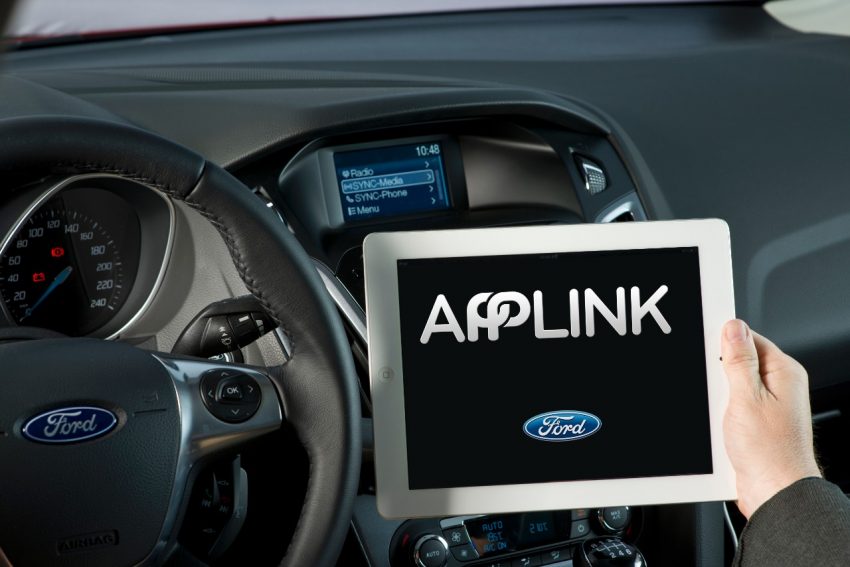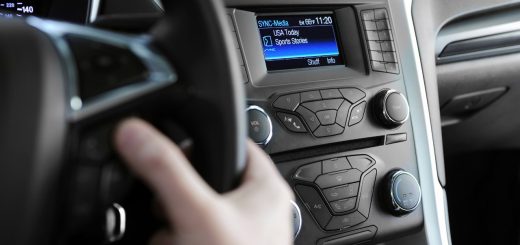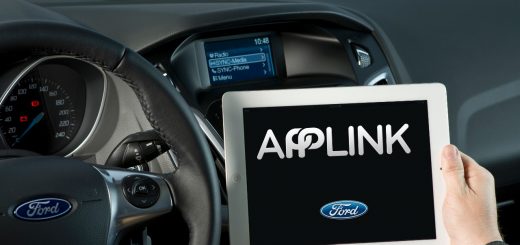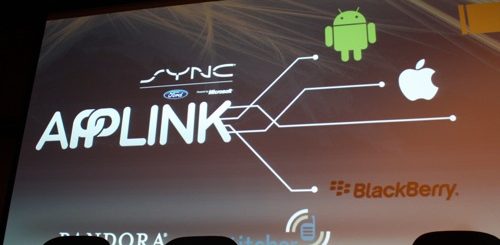According to The Ford Motor Company, today’s consumers are becoming increasingly more “organized, entertained and informed through their Internet-connected smartphones and tablets”. This very trend is why a system like Ford SYNC AppLink is more important than ever.
SYNC AppLink is a component of Ford’s SYNC infotainment system that enables the driver to safely interact with apps running on his or her smartphone by using convenient vehicle controls (such as buttons on the steering wheel or on the center stack) and voice recognition, all while keeping their hands on the wheel and eyes on the road. And the mere fact that consumers are bringing their devices into the vehicle and expect to interact with them while driving is reason enough for the deep vehicle-device-app connectivity space to become the next frontier of competition in the automotive world. Fortunately for Ford, it was the first automaker to offer a vehicle-device-app interconnectivity system that doubles as an app platform. That vehicle-device-app interconnect system and platform is called SYNC AppLink, and it has furnished The Blue Oval with a first-mover advantage over its competitors.
As of this writing, over 1.5 million vehicles in North America are already equipped with SYNC AppLink, but Ford has even bigger plans going forward. For starters, it will launch SYNC in Europe and Asia in 2014 — a development that will most definitely grow the installed base of AppLink-equipped vehicles. But perhaps even more important is the fact that later in 2014, Ford will offer SYNC AppLink as a downloadable and installable upgrade to 3.4 million vehicles currently on the road today. Those two developments should result in a significant growth in the installed base of AppLink-equipped vehicles, totaling around six million cars.
Additionally, Ford announced the public availability of the application programming interfaces (APIs) for SYNC AppLink a year ago at the 2013 International Consumer Electronics Show (CES). The move enabled software developers to make their apps compatible with Ford SYNC AppLink. Also in 2013, Ford contributed the SYNC AppLink code to the open-source GENIVI SmartDeviceLink project, allowing the platform to become an industry standard that’s capable of being used freely by any manufacturer or supplier. And just last week, The Blue Oval announced a SYNC AppLink developers conference as well as the next-generation SYNC AppLink system. Set to debut on the 2015 Ford Mustang, the new SYNC AppLink features several notable improvements over the present system.
But even though Ford was the first automaker to introduce an interconnect system, and even though it plans to expand the availability of the technology to more vehicles while continuing to improve it, the automaker can’t seem to stand still due to the competition, which is introducing competing systems of their own. In doing so, automakers like Ford are vying for the resources of app developers all over the world. And those finite resources are most often represented in the real world as a choice between developing for one platform (SYNC AppLink) over another (GM App Shop).
In other words, it’s vital for a vehicle-device-app interconnect system to be popular in order for developers to spend time and make their apps compatible. The analogy is similar to the smartphone space, where popular platforms such as Apple iOS and Google Android tend to get all the apps developed for them, while less popular platforms (Windows Phone and Blackberry) aren’t as fortunate. Similarly, rival automakers have introduced or are now introducing infotainment and advanced connectivity systems in their vehicles.
General Motors, for instance, is launching an entirely different take on in-vehicle connectivity than Ford. Rather than offer drivers a way to safely interact with apps running on his or her phone, Ford’s cross-town rival is launching a full-fledged in-vehicle connectivity system that runs apps on its own. The approach is in stark contrast to that of Ford, which simply treats the vehicle and its various controls (steering wheel, center stack, and voice recognition) as a remote control to the apps running on a smartphone, rather than on the car’s infotainment system. For now, AppLink is winning the battle, as it has millions of cars on the road, while GM has zero until spring or summer of 2014.
But that’s not to say that all things are rosy in the AppLink world, with the biggest complaint being an unkept promise. Several years ago, Ford promised to provide owners of vehicles equipped with the advanced touchscreen-based MyFord Touch infotainment system an upgrade containing SYNC AppLink. It has now been several years since that promise was made, and Ford has yet to deliver the functionality, or updated owners on its status.
Given the likelihood of the connected vehicle space undergoing an accelerated, if not wild, growth over the next decade, Ford’s initial success out of the gate shows forethought and vision. Let’s hope The Blue Oval can retain its leadership position while delighting customers by continuing to improve its product.













No Comments yet